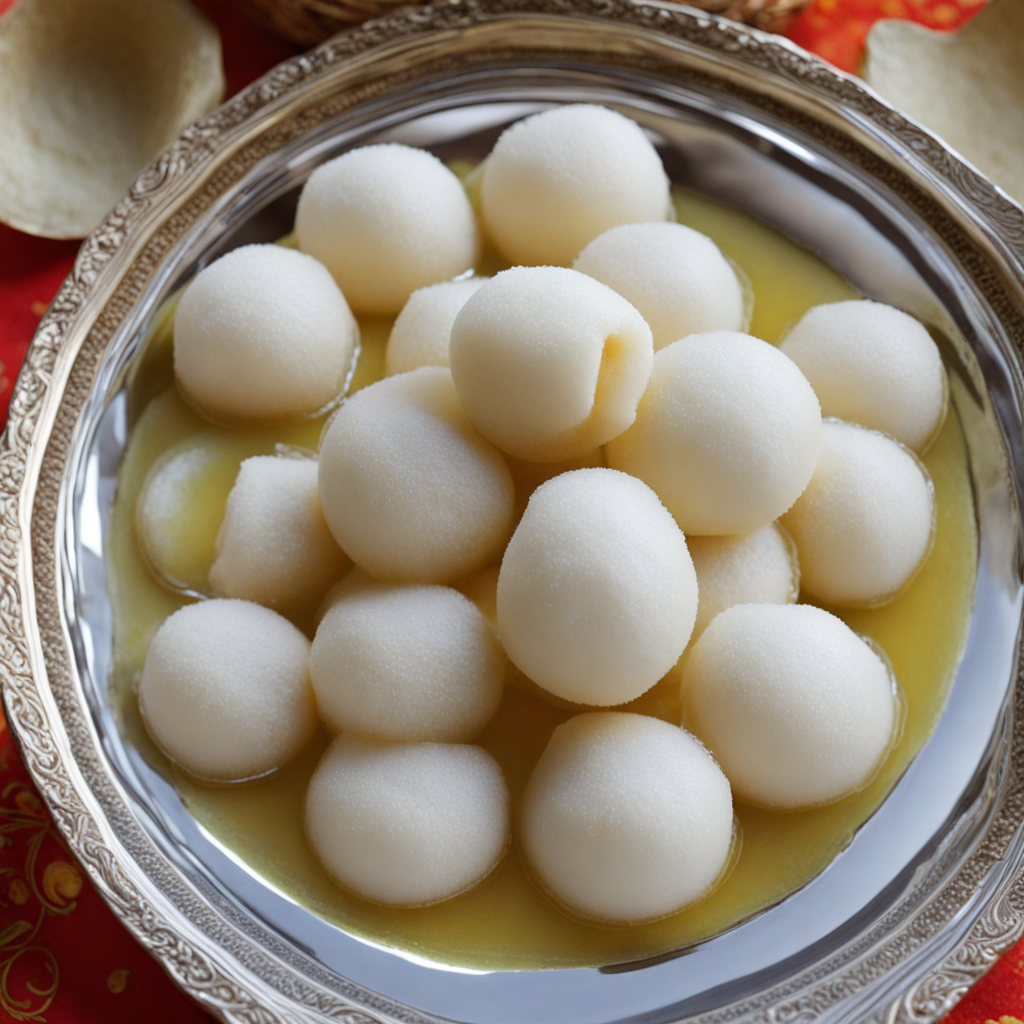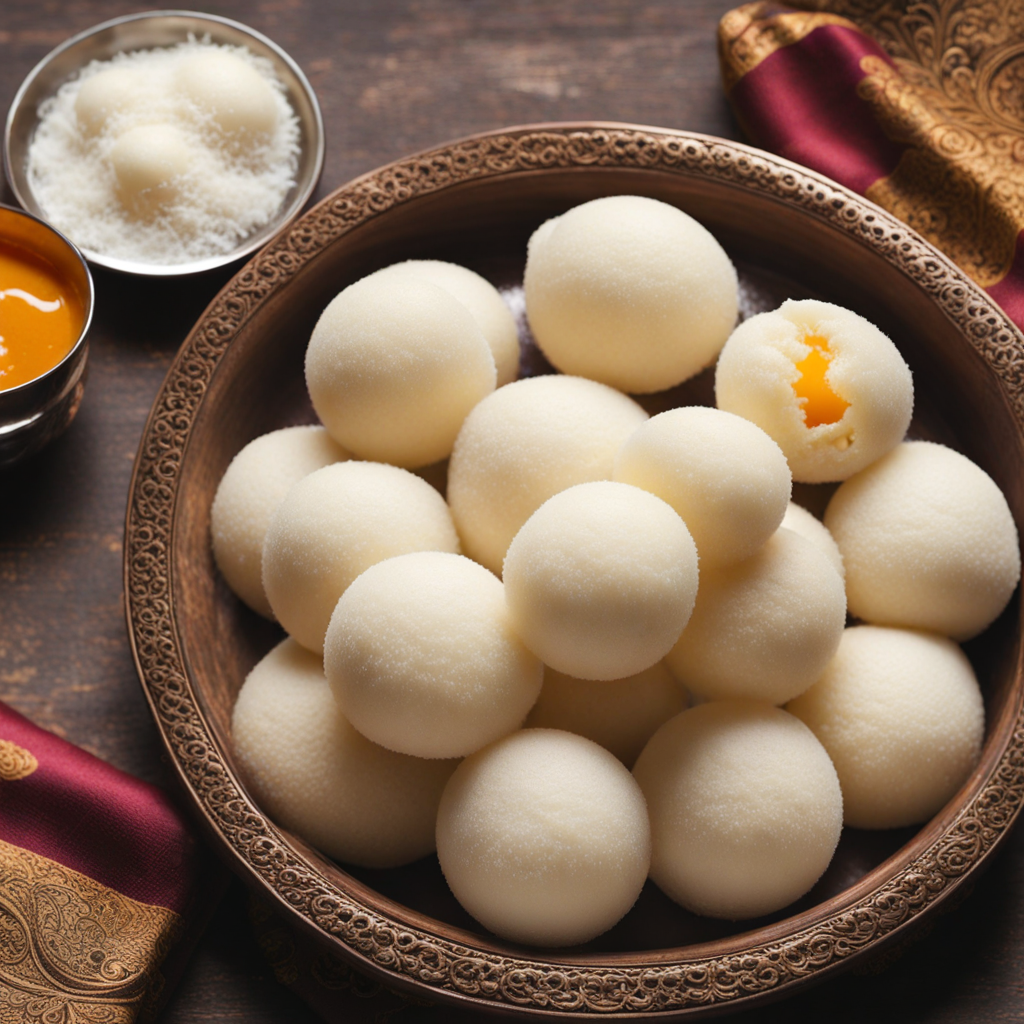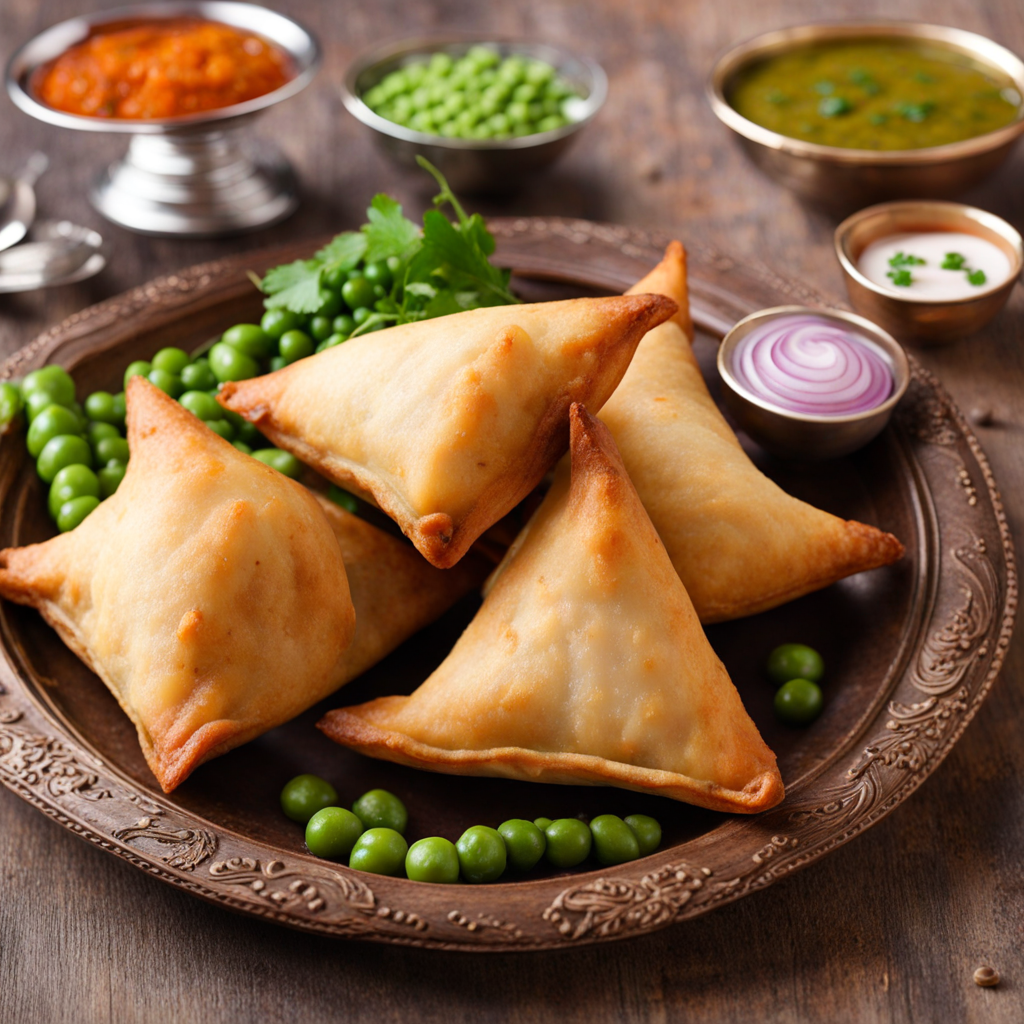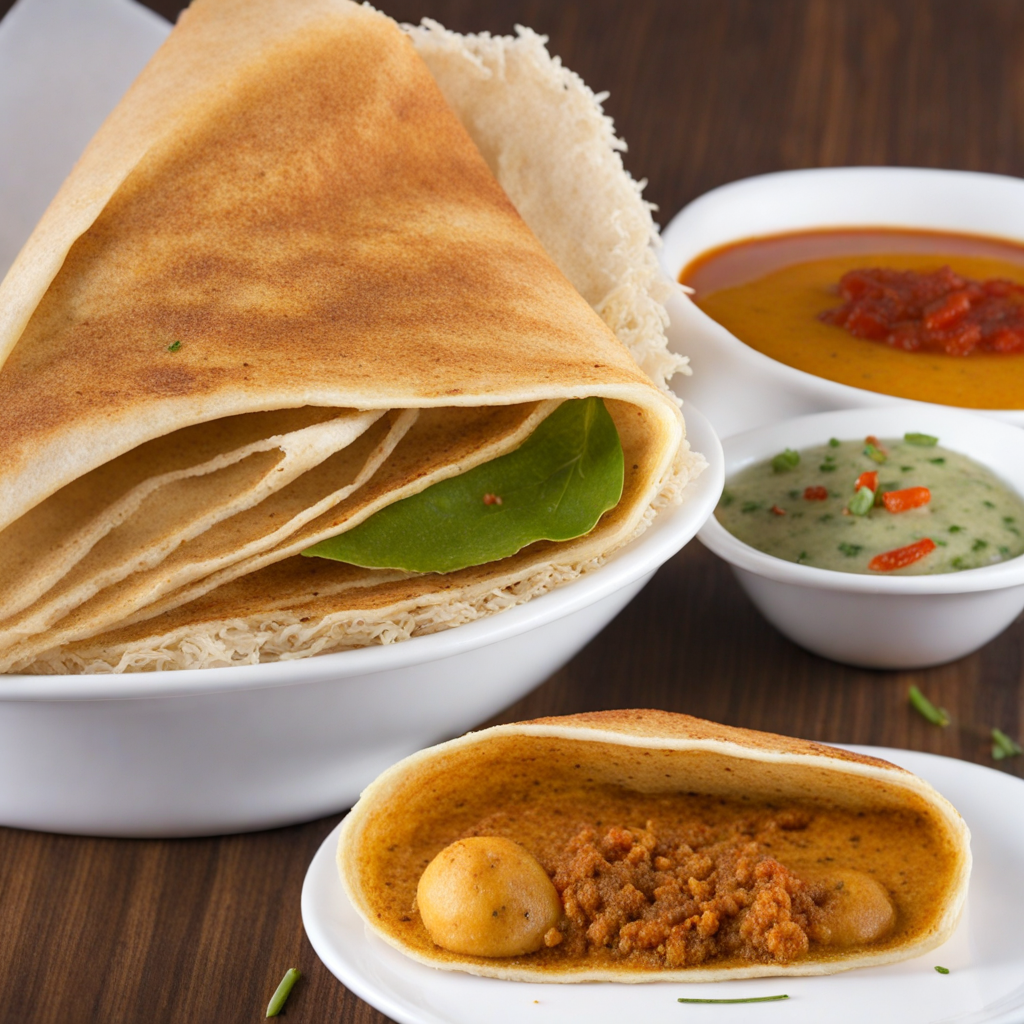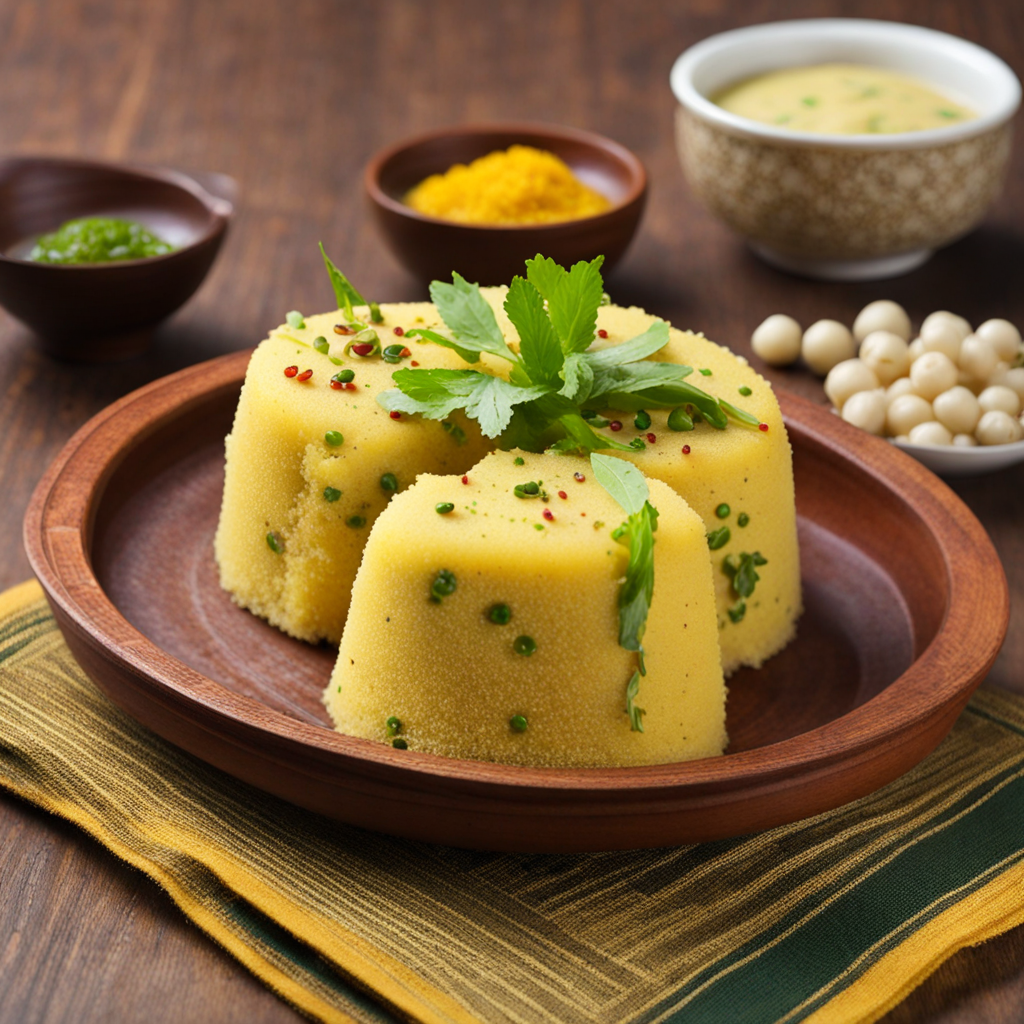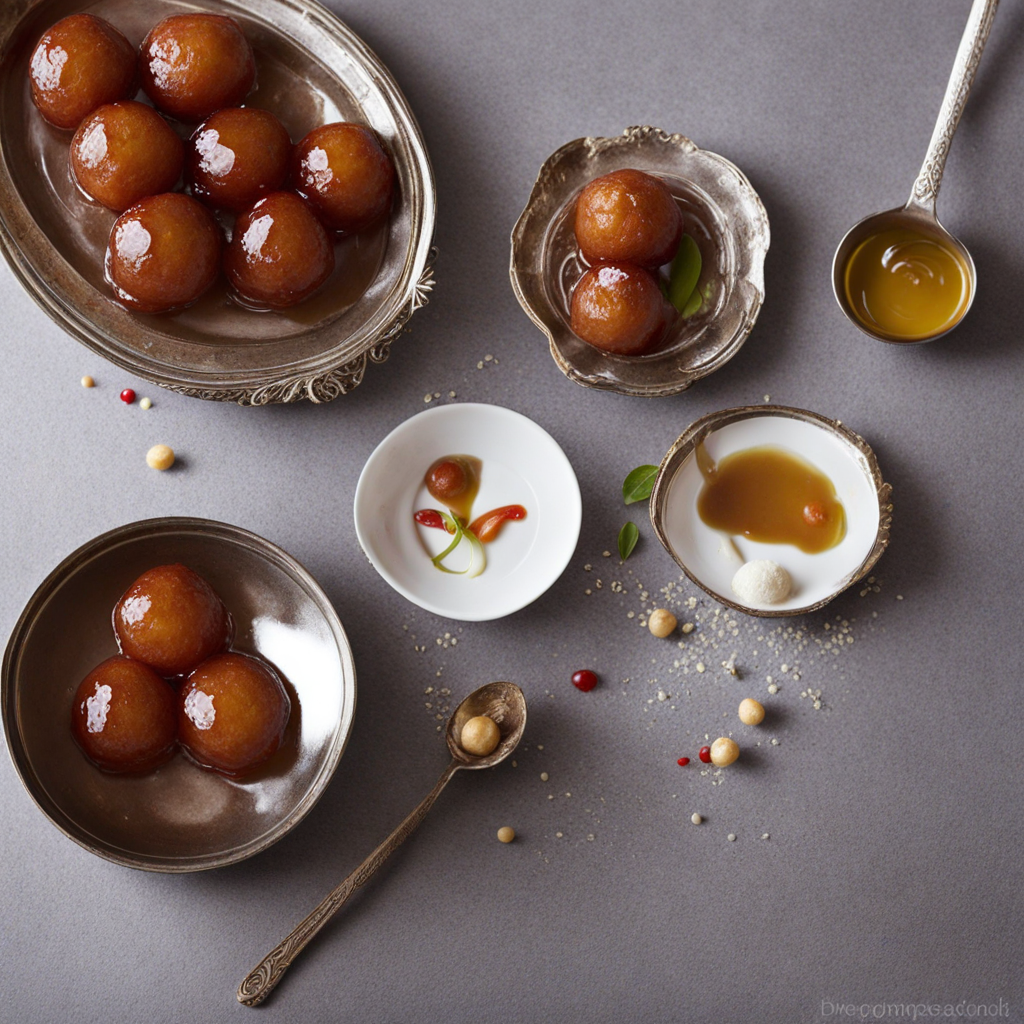Rasgulla
Rasgulla is a delightful Indian sweet that originates from the eastern state of West Bengal, known for its soft, spongy texture and a subtly sweet flavor. Made primarily from chhena, which is fresh cheese obtained by curdling milk, these small, round dumplings are cooked in a light sugar syrup. The process involves kneading the chhena until it becomes smooth, then shaping it into balls before boiling them in the syrup. The result is a melt-in-your-mouth treat that soaks up the syrup, making each bite an explosion of sweetness. The taste of Rasgulla is uniquely refreshing, with its delicate balance of sweetness and a hint of cardamom, which is often added to the syrup for flavor enhancement. The texture is unlike any other dessert; it is soft yet slightly springy, creating a pleasing contrast when you bite into it. Rasgulla is typically served chilled, which adds to its refreshing quality, making it an ideal dessert for warm weather or festive occasions. Each piece is a celebration of flavors, and many people find themselves longing for more after just one. Rasgulla is often enjoyed on its own, but it can also be paired with other Indian sweets or served alongside savory dishes during festive meals. The dish has become a symbol of Bengali culture, and its popularity has spread far beyond India’s borders, delighting dessert lovers around the world. Whether you are a connoisseur of Indian cuisine or a newcomer eager to explore, Rasgulla offers a unique taste experience that showcases the rich culinary traditions of India.
How It Became This Dish
The story of रसगुल्ला (Rasgulla) begins in the eastern part of India, particularly in the state of West Bengal. This delectable sweet has its roots deeply embedded in the culture of the region. Although its exact origin is often debated, it is widely accepted that Rasgulla was developed in the late 19th century. The sweet is made from chhena, a form of fresh cheese, which is prepared by curdling milk and then kneading it into soft balls. The chhena balls are then cooked in a light sugar syrup, resulting in a spongy texture that absorbs the sweetness, making Rasgulla a beloved dessert across India. The origins of Rasgulla are often attributed to Nabakrishna Deb, a wealthy Bengali landlord, who is said to have commissioned its creation in the town of Kolkata in the 1860s. However, some historians argue about its possible links to the state of Odisha. In Odisha, a similar sweet known as Rasgulla or Rasagola has been enjoyed for centuries, particularly during the famous Rath Yatra festival dedicated to Lord Jagannath. The sweet's connection to religious festivities underscores its cultural significance, making it an integral part of celebratory meals. Over time, Rasgulla transcended its regional boundaries, becoming a cherished dessert throughout India and even beyond. In the early 20th century, the sweet began to spread to other parts of the country, thanks in part to the burgeoning popularity of Bengali cuisine. The introduction of Rasgulla to various Indian households marked a significant shift in dessert culture, as more people began to appreciate the delicate flavors and textures of this traditional sweet. The preparation of Rasgulla has also seen various adaptations over the years. While the classic version is made with plain sugar syrup, modern interpretations have experimented with additional flavors and ingredients. Chefs and home cooks alike have started infusing the syrup with cardamom, rose water, or even saffron, adding depth to the traditional recipe. This innovation has allowed Rasgulla to evolve, appealing to a broader audience while still retaining its essence. Culturally, Rasgulla carries profound significance within Bengali society. It is often associated with hospitality and celebration. In Bengali households, offering Rasgulla to guests is considered a gesture of warmth and welcome. The sweet is also a staple during festivals such as Durga Puja, where it is offered to deities and enjoyed by devotees. The act of sharing Rasgulla during these occasions reinforces community bonds and celebrates cultural heritage. The sweet's popularity has also led to a fierce rivalry between West Bengal and Odisha over its origins. In 2016, the state of Odisha applied for a Geographical Indication (GI) tag for its version of Rasgulla, claiming its historical significance and regional authenticity. West Bengal, in response, sought to protect its own claim to the sweet's origin, leading to a spirited debate about culinary heritage. This rivalry highlights the importance of Rasgulla in both states, not just as a beloved dessert but as a symbol of cultural pride. In addition to its cultural significance, Rasgulla has had a significant impact on the food industry. The commercialization of the sweet has led to the establishment of numerous sweet shops in Kolkata and other cities, specializing in Bengali sweets. These shops have become iconic, drawing people from all walks of life who seek to indulge in the authentic taste of Rasgulla. The accessibility of Rasgulla has also contributed to its status as a popular dessert choice during family celebrations and events. Rasgulla's journey from a regional delicacy to a national favorite is a testament to its enduring appeal. The sweet has found its way into the hearts of many, becoming synonymous with Indian dessert culture. Its versatility has allowed it to be featured in various culinary contexts, from traditional feasts to modern fusion dishes. Chefs have incorporated Rasgulla into innovative desserts, such as ice creams and pastries, showcasing its adaptability. The globalization of Indian cuisine has further solidified Rasgulla's place in the culinary world. As Indian restaurants and sweet shops have proliferated internationally, Rasgulla has emerged as a flagship dessert, representing the rich heritage of Indian sweets. The growing interest in Indian cuisine has led to Rasgulla being featured in food festivals and culinary events across the globe, introducing it to new audiences who appreciate its unique flavors and textures. In recent years, the social media boom has also played a role in popularizing Rasgulla. Food bloggers and influencers have taken to platforms like Instagram and TikTok to showcase their own takes on the classic sweet, sparking interest and curiosity among younger generations. The visual appeal of Rasgulla, with its glossy syrup and soft texture, makes it a favorite for food photography, further enhancing its popularity. The story of Rasgulla is not just one of a sweet treat but a reflection of cultural heritage, community bonds, and culinary evolution. Its ability to adapt and thrive in various contexts speaks to its significance in Indian society. Whether enjoyed during a festival or as an everyday indulgence, Rasgulla continues to be a beloved symbol of sweetness, warmth, and tradition, capturing the essence of Indian culinary artistry in every bite.
You may like
Discover local flavors from India


